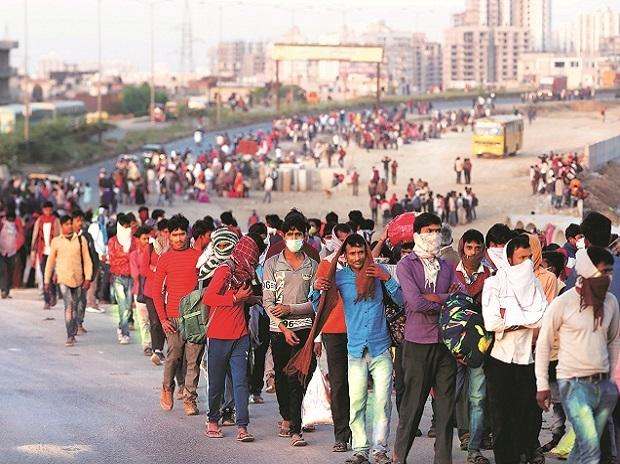New India – Post Pandemic, a way forward
India before the Pandemic
Announcement of 100 Smart Cities
Smart Cities concept came as a new hope for the citizens of developing countries. Citizens in our towns and cities were confused because of lack of clarity- New Cities or Smarting the Existing?Government announced 100 Smart cities, and with that started the debates and conferences on what entailed the ‘SMART’. Most of the projects in the selected cities included the Retrofitting, redevelopment and green field development.
Rural Development
With the population figures soaring and increasing migrants in the cities, a research paper study was done, to propose development of rural areas. The study described Urbanization of Rural Areas, as a model for energizing the rural economy in India and to slow down rural – urban migration , which research has shown to be harmful to both; rural and urban people of India and their regions. The model presented here was designed to use the resources existing in social, traditional, cultural, legal, ethnic, religious, economic and political layers of the rural society. It also sought to enable the region to build upon them to generate resources.
https://www.inawe.in/urbanization-of-rural-india/
Excerpts
Recent estimates show that the cost of environmental degradation, largely driven by sprawling cities, is “enormous”. It is reducing India’s GDP by 5.7 percent or about $80 billion annually. Since most of the people from distant villages, when they migrate into cities, usually land up in slums. Therefore, reducing migration from villages means automatic reduction in slums.
Key component of rural development
It is important to recognize the strong link between reduction of poverty and the provision of basic amenities to the population, especially those living in rural areas. Since the bulk of the poor in India is in rural areas, therefore improved infrastructure will contribute to poverty reduction. Such provision of civil infra-structure is not only a key component of rural development but also an important ingredient in ensuring any sustainable poverty reduction program. The proper development of infrastructure in rural areas will improve rural economy and quality of life. It promotes better productivity, increased agricultural incomes and adequate employment.
Neighborhood – smallest denominator of Urban fabric
‘Approach to Integrated Sustainability.’
https://www.grihaindia.org/files/shashwat/2019/integrated-sustainability/mobile/index.html#p=130
Issues of sustainability have arisen due to rampant development in the developing as well as the developed countries. Some of the ramifications have been on Air quality, traffic snarls, increased FAR, changed land use etc.
It is all a vicious cycle- migration for greener pastures to cities because of lack of opportunities and development in rural areas, has brought population explosion. The cities are bursting from their seams, and boundaries between cities and towns are fading. An extension of city’s periphery has brought with it the menace of landfills.
March 2020 Pandemic & Lock down
Pandemic crisis with nationwide lock down in most countries world over, has brought about much introspection, relative to each country. Point in concern is India and its fight for future planning. What we saw, mass reverse exodus of migrants to their native villages, diluted governments efforts of containing the virus. Our future resilience to any other such disasters requires a deeper thinking and planning for both urban and rural areas.
Among the top priorities for development after this pandemic is the health and transport infrastructure at all levels. Where there is life there is livelihood! What should New India post pandemic look like? How and where do we start?
The present scenario has once again exposed the web of urban and rural interdependence. And, also brought to fore the importance of comprehensive development.
New Urbanism
The most affected were poorer neighborhoods, because of lack of infrastructure and close proximity to each other besides poor sanitation. And most that left the cities were the city’s migrants. Even in spite of lock down virus could not be controlled, as is in the case of Mumbai.
The billionaire Rattan Tata, in an online panel discussion organized by CorpGini – “a community of innovative corporates” – worried about the “miserable standard of living in slums with lack of fresh air, hygiene, open space, and close proximity.” Mumbai’s “redevelopment policies should be revisited to provide a better quality of life to the poor” he urged, and “acceptable standards in terms of quality of life” must be re-examined. (https://thewire.in/urban/city-planning-pandemic )
If we weave all the above threads, it is imperative that existing infrastructure in each city needs to be updated. For any future calamities, main focus areas should be transport, healthcare and governance. When we talk about retrofitted cities, decentralization of facilities, infrastructure and governance are the governing factors.
A way forward
- First and foremost, rural development is the key to many problems and will help to control migration. As per the report this will create employment and reduce the burden on the cities, transport and infrastructure.
- Healthcare facilities should be provided for rural population. The study shows a model development plan as part of CSR.
- Metropolitan cities should have 4 zones ( North, South, East & West) for inter-state travels, within a distance of 5km https://economictimes.indiatimes.com/news/politics-and-nation/migrant-workers-crowd-anand-vihar-bus-terminus-to-return-to-their-villages/articleshow/74863940.cms?from=md
- All Neighborhoods in 5 km radius should have multidisciplinary multi-bed hospitals
- Each neighborhood should have car free roads with segregated pedestrian and cycling paths. https://www.grihaindia.org/files/shashwat/2019/integrated-sustainability/mobile/index.html#p=130
- This also includes a proposed plan for decentralization of waste management, governance, healthcare, and transport.
- Central control room for each zone is a must, with data base and coordination of all agencies. This acts as a war room in such emergencies and becomes one point reference for all, even during normal conditions. These are essential for surveillance, emergency and clinical command situations, integrated traffic and disaster management.
A New India should be a model of parallel development, that is inclusive, safe and liveable!
Dipika Tuteja
Image courtsey https://www.business-standard.com/article/current-affairs/in-pics-migrant-workers-taking-to-the-highways-to-walk-home-120051400544_1.html


